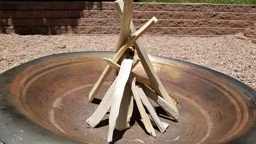
For some, hiking can be less than satisfying. Prying these folks away from their sweet spot on the dock, reading chair, or just away from Twitter on their smart phone can be a Herculean task. But there’s a way to entice your reluctant adventurer to get out and hear another kind of tweet: geocaching. And they can even take their i-berry-droid-palm-phone thingee along as part of the fun.
Geo-What?
Geocaching is an activity that started around the year 2000, when improvements to the Global Positioning System (GPS) allowed for honing in on exact locations. The first treasure box was stashed, coordinates were released on the Internet, and now, a decade later, there are over a million caches out there waiting for you to find them.
This advanced game of electronic hide-and-seek uses a handheld GPS device ($69-$499) or a downloadable geocache smart phone application (around $10) to guide you on a high-tech scavenger hunt.
It’s a little like orienteering in that you navigate your way via an electronic compass to get where you’re going. But while it will point you in the right direction, it’s up to you to find your path. It’s important to carry a paper map along with you to understand what physical obstacles, such as streams or gorges, stand between you and your goal. (Some higher end devices have digital maps.)
Once you’re close, poke around for some sort of lidded item – usually a plastic storage container or even a simple bucket. Inside you’ll typically find some trinkets and a notebook for signing in. You’re allowed to take the trinket, but the code of conduct dictates that another is left in its place. Popular items include toy army men, key chains or coins, but really just about anything that won’t rot is fair game.
The How-To
To get started, you’re going to need latitude and longitude coordinates to pinpoint a cache in your area, and – not surprisingly – they’re all online. The big dog of websites for the pursuit is Geocaching.com. It’s free (though one can purchase a deluxe membership to help support the site) and is a trusted source of coordinates. It’s also a place to log your experiences and photos after the fact and get feedback on any caches you register and hide.
Start by looking up sites via a street address or zip code for a list of caches in your area. There are helpful rating systems to clue you into the terrain and difficulty. A terrain rating of 1 is wheelchair accessible, while a rating of 5 could require scuba equipment or climbing gear. The difficulty refers to finding the cache itself. Higher numbers mean a better hidden, and most likely smaller, cache. There are a slew of other icons indicating everything from whether a trail and cache is dog-friendly to whether hunting a particular cache requires stealth.
When you’ve selected your target, input the latitude and longitude into your GPS device – some devices can download coordinates automatically without your input. But before you rush off, make sure you have common sense hiking items like water, sunscreen, matches, flashlight, first aid kit, appropriate clothing and the cache description.
The Real Deal
I happen to have one of those reluctant hikers in my very own family, so I put geocaching to the test.
I asked Milo, nearly 7, if he wanted to go to a nearby state park, which has free-use geocaching gear. He barely looked up from his platoon of army guys entrenched in the garden. He was waiting for word back from his little spies off scouting the fire pit for mercenaries – or his sister. “No, thank you,” he replied. But then, I explained the activity (okay, I might have used the words “stealth” and “treasure”) and told him he could carry the GPS device. The thought of treasure hidden in the woods pushed him over the edge. In no time, Milo was buckled in the car.
At the park it was nice to get some professional help loading the coordinates into the handheld device. Because it was a basic unit, it had only three buttons but was capable of dozens of functions. This meant a ton of menus to wade through, but after some brief instruction, I was able to load in waypoints (locations stored into the GPS’s memory) myself.
Our cache read at less than a mile away, and as we traveled towards it, that number became smaller. Milo wore the GPS around his neck (by the way he brandished it, he clearly enjoyed the look of his new accessory) and updated me frequently on which direction the digital compass arrow was pointing towards the cache.
The sound of a waterfall got his attention though, and he looked up. “Wow, Mom, did you know it’s really beautiful out here?”
It was parental pay dirt.
GPS for Newbies
To get an accurate reading from the device, one must keep moving. Although the GPS knows where the cache is, for it to know which direction you’re facing – and which direction to point you towards – it needs you to keep plodding forward.
Also, there will be days and locations where the GPS signal will be weak, because GPS units get information from satellites, which are constantly moving. Forest density can play a hand in reception, too.
And perhaps most importantly, when you reach the coordinates, the cache isn’t necessarily right there. In addition to the treasure being hidden, the device only gets you to within 20 feet of the cache itself. This means you may have to work to find your cache, but from our experience, I can tell you it’s worth it.










